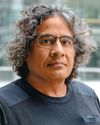
On October 6, 2003, US Deputy Secretary of state Richard Armitage huddled with Pervez Musharraf at the
presidential palace on the highly guarded Constitution Avenue in Islamabad. As he was heaping praise on Musharraf and Pakistan’s military brass for their efforts to dismantle the terror infrastructure in the country, a few kilometres away a car was stopped by a few armed men. Within seconds, the passenger’s body was riddled with bullets, and he fell in a pool of blood. The assailants fled, without leaving any trace.
The victim was Azam Tariq, head of the banned Sipah-e-Sahaba Pakistan, who was on his way to Islamabad from Jhang. And he was just one of the dozens of extremists eliminated by unknown killers in Pakistan in a few months.
Those were not ordinary times. Stung by the 9/11 terror attacks, the US had forced Islamabad to take action against Taliban and Al Qaeda militants, and masked men battering targets beyond recognition had become the new normal on Pakistani streets. Riaz Basra, founder of the Lashkar-e-Jhangvi, was killed in May 2002 in Mailsi in Punjab. Asif Ramzi, a Lashkar-e-Jhangvi operative wanted in 87 cases, was killed in December 2002. He was said to have links to the kidnappers of American journalist Daniel Pearl, who was later killed by suspected Al Qaeda operatives.
Many theories emerged on the killings—the war on terror, internecine clashes, harbouring hordes of extremists becoming untenable for the Pak spy agency Inter-Services Intelligence—but the perpetrators were never caught. Terrorism, however, bounced back. On the run, many militants joined hands with terror groups sitting across in Jammu and Kashmir where outfits like the Jaish-e-Mohammed and the Harkat-ul-Mujahideen used their skills to multiply their cadre.
هذه القصة مأخوذة من طبعة December 24, 2023 من THE WEEK India.
ابدأ النسخة التجريبية المجانية من Magzter GOLD لمدة 7 أيام للوصول إلى آلاف القصص المتميزة المنسقة وأكثر من 9,000 مجلة وصحيفة.
بالفعل مشترك ? تسجيل الدخول
هذه القصة مأخوذة من طبعة December 24, 2023 من THE WEEK India.
ابدأ النسخة التجريبية المجانية من Magzter GOLD لمدة 7 أيام للوصول إلى آلاف القصص المتميزة المنسقة وأكثر من 9,000 مجلة وصحيفة.
بالفعل مشترك? تسجيل الدخول

Too Much Sitting Can Accelerate Ageing
SITTING FOR EXTENDED PERIODS can harm the heart and accelerate ageing, even if you are young and get the minimum recommended amount of daily exercise, according to a US study published in the journal PLOS One.

Efficiency and innovation
As health care evolves, professionals must employ innovative methods to refine their skills

Level up
Only 30 per cent of needy patients are able to undergo transplant in India; we need more dedicated transplant centres

HOPE STEMS FROM A CELL
While stem cell therapies have shown success in treating blood disorders, orthopaedic ailments, autoimmune diseases and eye issues, there is hope that they can one day treat patients with heart disease, blindness, Parkinson's, HIV, diabetes and spinal cord injuries

Mind matters
Your mindset can limit or expand your physical ability

Cutting edge
Would you go under the knife if a robot was the one holding it? Or would you say, \"No way, I need a human touch\"? You might have to decide soon because a robot that can imitate skilled human surgeons is already here.

The smallest cut
Minimally invasive surgeries have a bright future, with virtual reality and 3D procedures offering greater precision and AI on the horizon

Signalling a revolution
Canadian scientist and entrepreneur Sachdev Sidhu is focused on bringing cutting-edge antibody engineering to his country of origin

Wellness on demand
Starting as a doctor-patient chat platform, Medibuddy has evolved to be India's largest on-demand, full-stack digital health care platform

HEARING AND VISION LOSS LINKED TO HEART DISEASE AND STROKE
A CHINESE STUDY PUBLISHED IN THE JOURNAL of the American Heart Association suggests that middle aged and older adults with sensory impairments, specifically hearing and vision loss, have an elevated risk of cardiovascular diseases, including stroke and heart attacks.